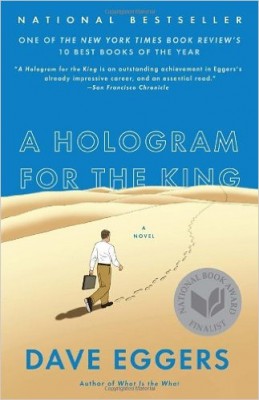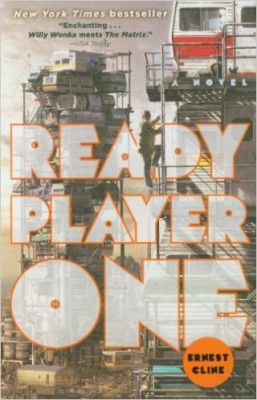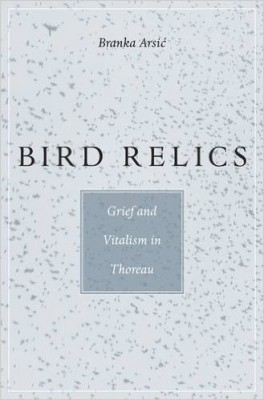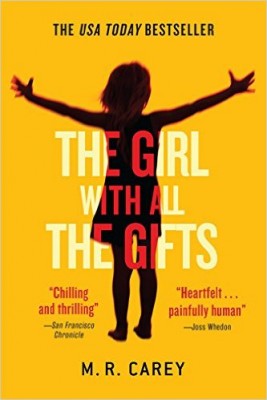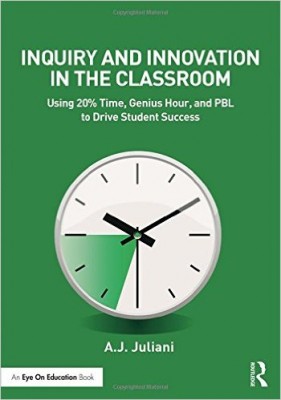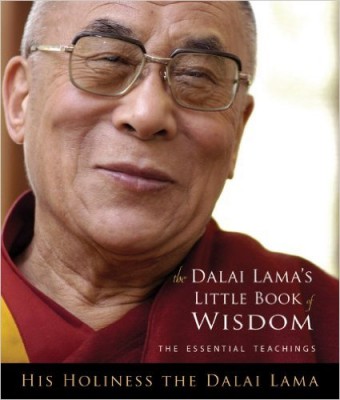Leslee Becker recommends Anna Karenina by Leo Tolstoy:
Two summers ago, I finally read Anna Karenina, the Richard Pevear/Larissa Volo khonsky translation. I loved the novel. The cover, though, is kitschy, like someone’s fervid dream about tubers and tumors. What can I say that hasn’t already been said about Tolstoy’s novel? Faulkner called it the greatest novel ever. Okay, it’s about adultery and agriculture, and it features sexually robust characters and others of a persuasion I call pious, fussy, and aggressively undermedicated. Everyone knows the opening line: “All happy families are alike; each unhappy family is unhappy in its own way.” After this, Tolstoy plunges into details about adultery and confusion in a particular household, where children are running around, and where the English governess of the feral kids quarrels with the housekeeper. The cook has already fled the premises. Oh, the horror, the horror! And then we see Prince Stepan Arkadyich Oblonsky rolling his “full, well-tended body over on the springs of a sofa, as if wishing to fall asleep for a long time.”
khonsky translation. I loved the novel. The cover, though, is kitschy, like someone’s fervid dream about tubers and tumors. What can I say that hasn’t already been said about Tolstoy’s novel? Faulkner called it the greatest novel ever. Okay, it’s about adultery and agriculture, and it features sexually robust characters and others of a persuasion I call pious, fussy, and aggressively undermedicated. Everyone knows the opening line: “All happy families are alike; each unhappy family is unhappy in its own way.” After this, Tolstoy plunges into details about adultery and confusion in a particular household, where children are running around, and where the English governess of the feral kids quarrels with the housekeeper. The cook has already fled the premises. Oh, the horror, the horror! And then we see Prince Stepan Arkadyich Oblonsky rolling his “full, well-tended body over on the springs of a sofa, as if wishing to fall asleep for a long time.”
I happen to love the stuff of Russian fiction, especially stories and novels that show lazy characters, pampered princes of postponement, like Ivan Goncharov’s Oblomov, a man who’s terrified of leaving his bed and participating in the real world. Tolstoy’s characters dream a lot, but they do get out of bed to attend to business affairs and amorous affairs. By the way, I’m not wild about folks saying they love a novel because the characters are “relatable”; in fact, it would take an epic to describe why I love Tolstoy’s epic tale, so I’ll steal from Anna’s thoughts: “Is it really possible to tell someone else what one feels?”
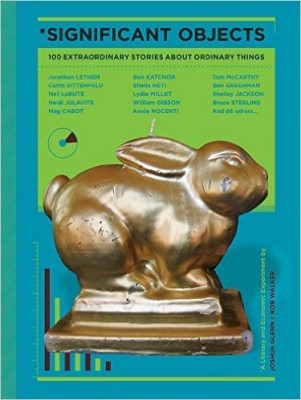 Lisa Langstraat recommends Significant Objects: 100 Extraordinary Stories about Ordinary Things (Ed Rob Walker and Joshua Glenn. Fantagraphics Books, 2012.)
Lisa Langstraat recommends Significant Objects: 100 Extraordinary Stories about Ordinary Things (Ed Rob Walker and Joshua Glenn. Fantagraphics Books, 2012.)
Over a period of 5 years, the editors of this collection acquired hundreds of objects, all donated or purchased for under $5 at thrift shops, yard sales, and flea markets. They then recruited writers, as various as William Gibson and Meg Cabot, to write brief stories/histories/profiles/memories that “attributed significance” to each of these seemingly insignificant objects. But the experiment didn’t end there. The editors then listed each object on eBay, posted the stories as the item description, and watched the items sell for 2,700% of their initial price.
The point of the experiment (still active at significantobjects.com) wasn’t about profit per se, but about value more generally: how do we ascribe value to things and how do things add (or not) value to our lives? The project intersects with recent research in cultural materialism and “thing theory,” and it engages all kinds of interesting questions about how narrative shapes meaning and how objects have agency separate from that which humans ascribe to them. But I especially like the book because the stories are often hilarious and moving (who knew a meat thermometer could seal a romance, or that a cheeky “All American Necking Team” button could help a son understand his long-dead father?). This is the kind of project and writing that collapses the academic and the popular, the theoretical and the visceral–all that. Significant Objects isn’t just a empty celebration of stuff, nor is it a caveat about Mammon and conspicuous consumption. It’s about the complexity of things now, in this moment, and it’s about making sense of the objects that shape our identities and relationships. Great graphics and photos, too.
Sue Doe recommends Dave Eggers’ Hologram for the King.
Read the book and then, OK, see the movie, though you should be prepared to be disappointed with the casting (and here I don’t mean Tom Hanks but the lack of Middle Eastern actors). The book captures the decline of the U.S. as a superpower, personified in the form of protagonist Alan Clay. He’s a healthy white guy without any real justification for excuses, but his cancer as well as his broader malaise and his past success are just holograms. Eventually, he finds love and a new home in the Kingdom, essentially outsourcing himself in order to find his relevance. On the way, Eggers provides some remarkable moments such as the scene early on when he describes the work of the professional stager, preparing Clay’s suburban house for sale.
Nancy Henke recommends Ready Player One by Ernest Cline
Ready Player One by Ernest Cline is set 30 years in the future when the energy crisis has wreaked havoc on the standard of living in the world. Gas is so expensive it’s only available to the super rich and the suburbs of major cities have become massive, multi-story trailer parks with several families cramped into a single mobile home. Since reality is harsh, many people turn to the virtual world of the Oasis for comfort, since there their avatars can live, fight, and explore in a world much more appealing than the real one. But when the creator of the Oasis – a man obsessed with the 1980’s pop culture of his adolescence – dies, he decides to bequeath his billion-dollar fortune to whichever avatar can solve riddles that lead to three keys that open three gates. Ultimately this book is an amusing sci-fi adventure story that’s rich with 1980’s nostalgia. If you’re looking for thoughtful literary fiction, look elsewhere; this book is brain candy – pure and simple.
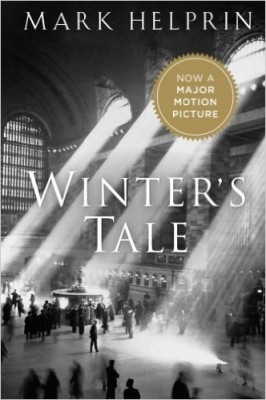
Zach Hutchins recommends Winter’s Tale by Mark Helprin
This book is just as cool as it sounds, a perfect summer read. I’ve never read anything quite like Winter’s Tale, but I’ll be reading it again soon. What I love is Helprin’s exquisite language. On several occasions I turned to whomever happened to be close by—my wife, my mother-in-law, a stranger—and told them to listen so that I could share a particularly scintillating sentence. I imagine that someone like Neil Gaiman was influenced by Helprin; their books certainly belong to a similar sub-genre of magical realism. If you love snowballs, or white horses, or New York City, or life itself, Winter’s Tale is the book for you.
And if, after you read it, you’d like to talk about Moby-Dick parallels, I’m dying to have that conversation with somebody.
Dan Beachy-Quick recommends Bird Relics: Mourning and Vitalism in Thoreau by Branka Arsic
Though I’m not sure it really qualifies as “summer reading” so much as reading one could do during the summer, the book I’ve been most deeply moved and challenged by in recent months is Branka Arsic’s Bird Relics: Mourning and Vitalism in Thoreau. Her approach to criticism is one I can believe in–not a species of judgment or critical-theoretical stance, but an effort at affirmation that seeks to read Thoreau according to his own concerns, to walk down the path he’s cleared, and say what can be seen. What is seen is astonishing reversal of the “common sense” Thoreau derided. Moving from the ancient world and its notion of “perpetual mourning” as a way to maintain a vital connection to the dead, to 19th century Vitalism and the wildly porous sense it gave Thoreau of the boundary between self and world, the book never fails to open up a wider sense of what work thinking is when thinking is also a form of life not circumscribed simply by or as thought.
Aparna Gollapudi Robot Dreams by Sara Varon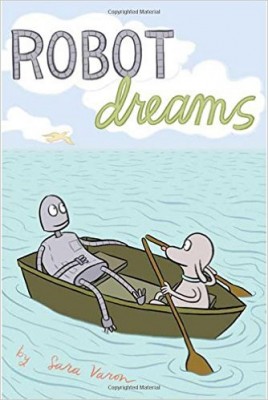
Robot Dreams is a nearly wordless graphic novel in which the friendship between the two protagonists – a dog and his robot – is portrayed powerfully without the use of dialog or textual narrative. The art of Varon’s novel might look deceptively simple, with cartoon-like figures, pastel tints, and minimal cross-hatching, but the story it tells is emotionally sophisticated and nuanced — funny, poignant, whimsical, and pragmatic by turns. A must read…or must view…well, a must.
Debby Thompson recommends Julie of the Wolves by Jean Craighead George
Lately I’ve been re-v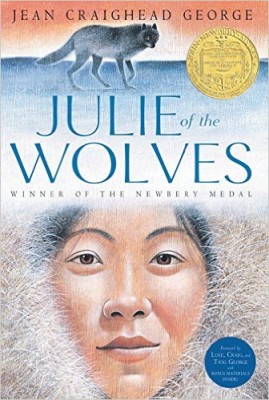 isiting books of my childhood, back when I read for the sheer pleasure of reading and the delight of discovery. In my current life as an English professor, I read critically for a living. That mode of reading I also value, but, when I’m immersed in it, it’s easy to lose track of that other kind of reading that cast its initial hold on me. In re-reading books that sparked my imagination as a child, I’m enjoying the dual poles of reading, feeling the pulls of both creative mystification and critical demystification.
isiting books of my childhood, back when I read for the sheer pleasure of reading and the delight of discovery. In my current life as an English professor, I read critically for a living. That mode of reading I also value, but, when I’m immersed in it, it’s easy to lose track of that other kind of reading that cast its initial hold on me. In re-reading books that sparked my imagination as a child, I’m enjoying the dual poles of reading, feeling the pulls of both creative mystification and critical demystification.
Currently I’m re-reading Jean Craighead George’s Julie of the Wolves. This book, which I read eagerly when it was published in 1972, and which captured my childhood imagination, is now problematic to the critic in me for all kinds of reasons. Not least is the (white) author’s depiction of Eskimos as one with nature and at the same time—like much Arctic wildlife—as hopelessly doomed. Thirteen-year-old Julie, living among the wolves, plays the role of what some cultural critics have dubbed the “mystic Indian,” more primitive and more wise than mainstream inhabitants of the lower 48 states. I value my critical ability to see the problems with such depictions, but at the same time I value this book’s historical role in teaching children like me that wolves and other animals communicate and form complex social structures, that these creatures are inherently valuable, and that there were alternative approaches to the natural environment and its creatures than the one I was being raised in. As I re-read Julie of the Wolves, I’m learning how to be, simultaneously, both the questing child and the denaturalizing adult.
Sharon Grindle recommends The Girl With All The Gifts by M. R. Carey
As with most dystopian science fiction, part of the fun of this novel is figuring out what exactly has gone wrong in the world–which I won’t spoil for you (though many reviews will, so be careful). Should you be familiar with the plot twist and are the sort to shy away from this particular flavor of dystopia, let me still encourage you to give this one a read. The first halfish of the novel is told through a child’s POV, one that is necessarily focused on what someone her age wants most in the world: acceptance and nurturing–and a little less on the bloody mechanics of survival in a harrowing post-apocalyptic world. As we find out why she isn’t being given that emotional support, we’re drawn into a cataclysm that’s more plausibly explained than most. I love a good humans-in-the-face-of-adversity read, and this one kept me thinking even after I finished.
Amanda 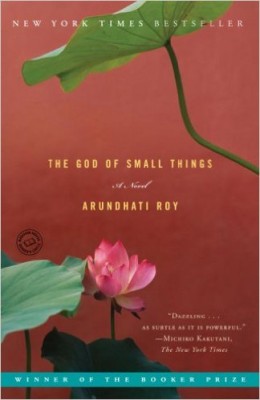 Memoli recommends The God of Small Things by Arundhati Roy
Memoli recommends The God of Small Things by Arundhati Roy
I re-read this about a year ago, which confirmed what I suspected (though couldn’t fully articulate) when I first encountered it as a teenager in my high school AP English class: there is something singularly special and magical about this book. Against the backdrop of encroaching modernity and a shifting caste system, the narrator Rahel travels back to her, now crumbling, childhood home in South India, upon discovering that her mute twin brother Estha has recently returned as well. The two of them, once inseparable, have not seen each other for 25 years. The rest of the story works to unravel the past and reveal the pivotal events that transpired long ago, which continue to mark their present lives. It’s a story about moments of unexpected joy, the transgression of boundaries, and the loss of innocence. What is most compelling about this book is the lyric nature of Roy’s prose which are both luxurious and insightful. I don’t think that I’ve ever come across a book that was so enjoyable to read from start to finish. I would definitely recommend it for a summer reading list!
Pam Coke recommends A. J. Juliani’s Inquiry and Innovation in the Classroom
- “How often do we allow students to ‘find their talents’ in school?”
- “Does homework actually prepare students for the real world?”
- “What does the real world look like?”
These three questions and have been haunting me for months, and they are the exact questions A. J. Juliani, K-12 Technology Staff Developer at Wissahickon School District in Ambler, PA, tackles in his book Inquiry and Innovation in the Classroom: Using 20% Time, Genius Hour, and PBL to Drive Student Success (Routledge, 2015, 152 pages). Juliani promises to connect inquiry and innovation through stories and examples from the field, and he delivers. He asserts, “When students are able to be curious, and to explore their interests and passions, innovative work happens” (p. xvii). This is why I sought out this book. I want to make curiosity a central part of my English Education courses, and Juliani is helping me learn how.
If you are looking for ways to actively involve your students in the curriculum, Juliani’s book is for you. He explains what 20% Time is, the concept of allowing students 20% of their learning time to pursue their passions, to learn about what they want to explore. While Google has become well renowned for how it uses 20% Time, Juliani does his homework, tracing the roots of this valuable practice back to Maria Montessori’s work in the early 20th century. What sets Juliani’s book apart, however, is how he walks the reader through how to apply 20% Time in your own classroom. He describes what 20% Time can look like for elementary students, secondary students, and teachers. He shares students’ sample passion projects that foster and showcase innovative thinking, including creating an anti-bullying campaign and making a video game on digital citizenship.
I am convinced that problem-based learning can have an impact on improving the teaching and learning that takes place in my English Education courses. Revising my teaching methods course for Fall 2016 is requiring some radical revision, not only in texts and assignments, but in in thinking and strategies. Inquiry and Innovation in the Classroom is a relatively easy read; I can read it any time, night or day, and take something away from it. However, it is also an extremely challenging read; it is challenging me to question how and why I do what I do in the classroom. That is what keeps me reading.
James Roller recommends the Dalai Lama’s Little Book of Wisdom: The Essential Teachings
Broken into brief vignettes, the reader receives ideas on developing contentment and joy, dealing with anger and emotion, and evoking personal transformations of mind and perspective. It is an experience that can be rewarding when read for very brief intervals of a minute or two, or as a part of longer moments of reading, thought, and meditation. Interestingly, even the ideas on difficult things like “Facing Death and Dying” translate easily to facing any reality of life that cannot be avoided or denied forever. More about reflecting upon one’s own interpretive process than upon any religious dogma, it can facilitate one’s pursuit of a happier, and more contemplative life.
(All images taken from Amazon.com)
